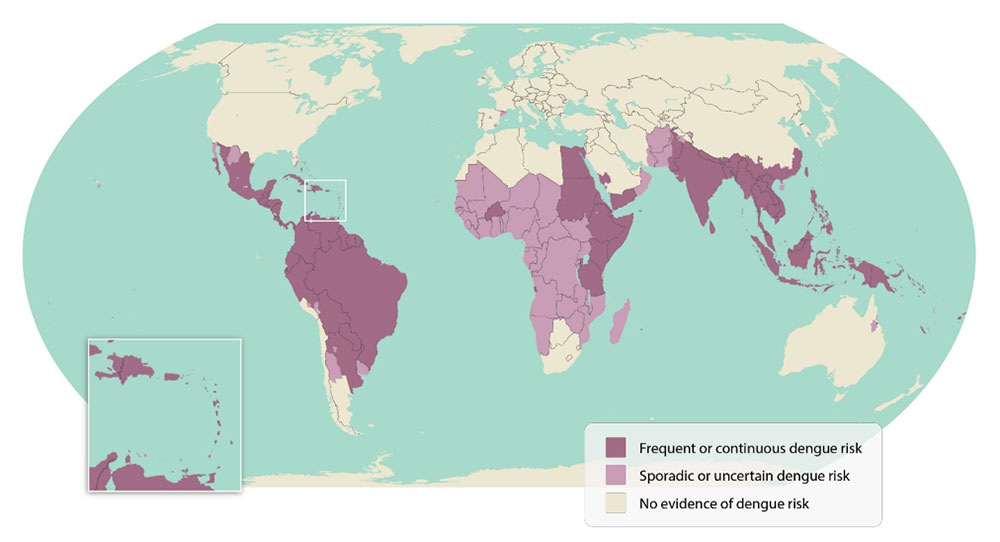Dengue Fever is virus contracted from a mosquito bite, and as the name suggests, symptoms of fever after infection is common. Other symptoms include headache, fatigue, muscle and bone pain, and rash. In some countries, Dengue is known as “bone-break” fever due to the joint pain that can result after infection.
Where is Dengue Fever Found?
The World Health Organization estimates nearly half the world’s population live in areas at risk for Dengue Fever. Between 100 million and 400 million cases occur every year. The disease is found in tropical and sub-tropical areas in over 140 countries including the Americas, Asia, Africa, and the Pacific Islands.
In partnership with the CDC, the Dengue outbreak map compiles information from ministries of health worldwide to inform travelers of potential risk.


Why is Infection So Common?
Dengue Fever is spread from the Aedes mosquito species which is different from the mosquito variety that causes malaria. Unlike mosquitos that carry malaria, the Aedes mosquito has adapted to live in urban and residential areas. Subsequently, Dengue Fever is a risk for travelers visiting mid-size and large cities in tropical and sub-tropical regions.
Because even small amounts of standing water is enough for mosquito larvae to hatch, the number of infections increases after periods of rain. In many places throughout the world, rainy seasons last for months resulting in extended spikes in reported cases.
Further complicating public health efforts, there are four strains of Dengue Fever and infection with one strain does not necessarily protect against the other strains. After infection, a person develops longer-term immunity only to that specific strain of Dengue virus, also known as natural immunity. However, only short-term protection is awarded against the other three virus strains. As such, people living or visiting risk areas can be infected multiple times over their lifetime.
What Can I Do to Prevent Infection?
The single best prevention is to avoid mosquito bites. While this may be easier said than done, here are some suggestions from CDC;
- Wear long-sleeved shirts and pants when possible
- Use insect repellent on exposed skin.*
- Apply permethrin to clothing and gear such as backpacks
- Choose accommodations with air-conditioning, fans, and screened windows.
*Additional suggestions on choosing insect repellents can be found on the Malaria information page.
Is There a Vaccine for Dengue Fever?
The Dengvaxia vaccine is only approved for individuals 9 – 16 years old who reside in the US territories of American Samoa, Puerto Rico, and the US Virgin Islands. Further, in order to be eligible for vaccination, children and adolescents must have laboratory confirmation via blood testing of a previous infection.
At this time there is no additional vaccine option for the US traveler and no other prevention medication.

- Destination Health
- June,22 2023